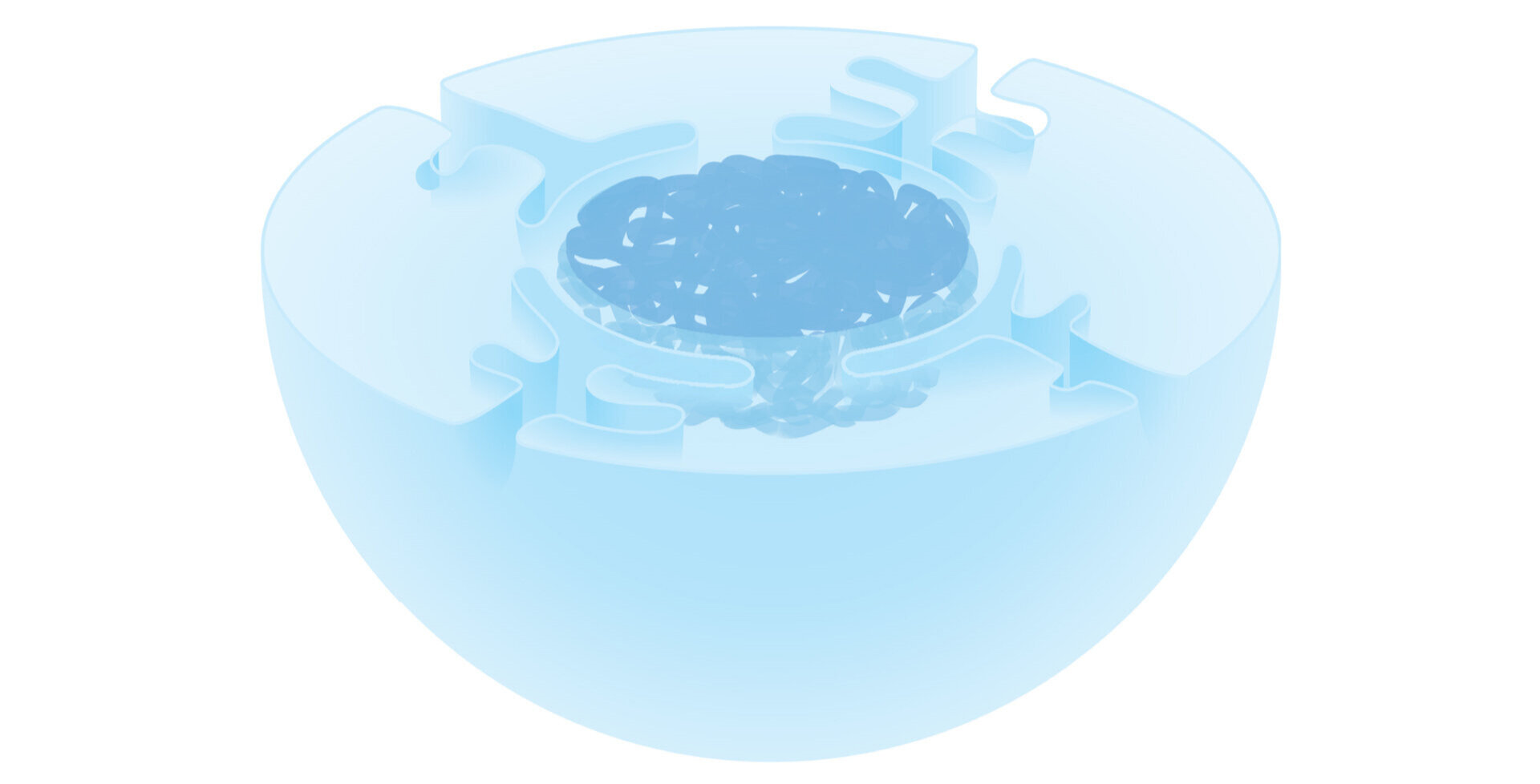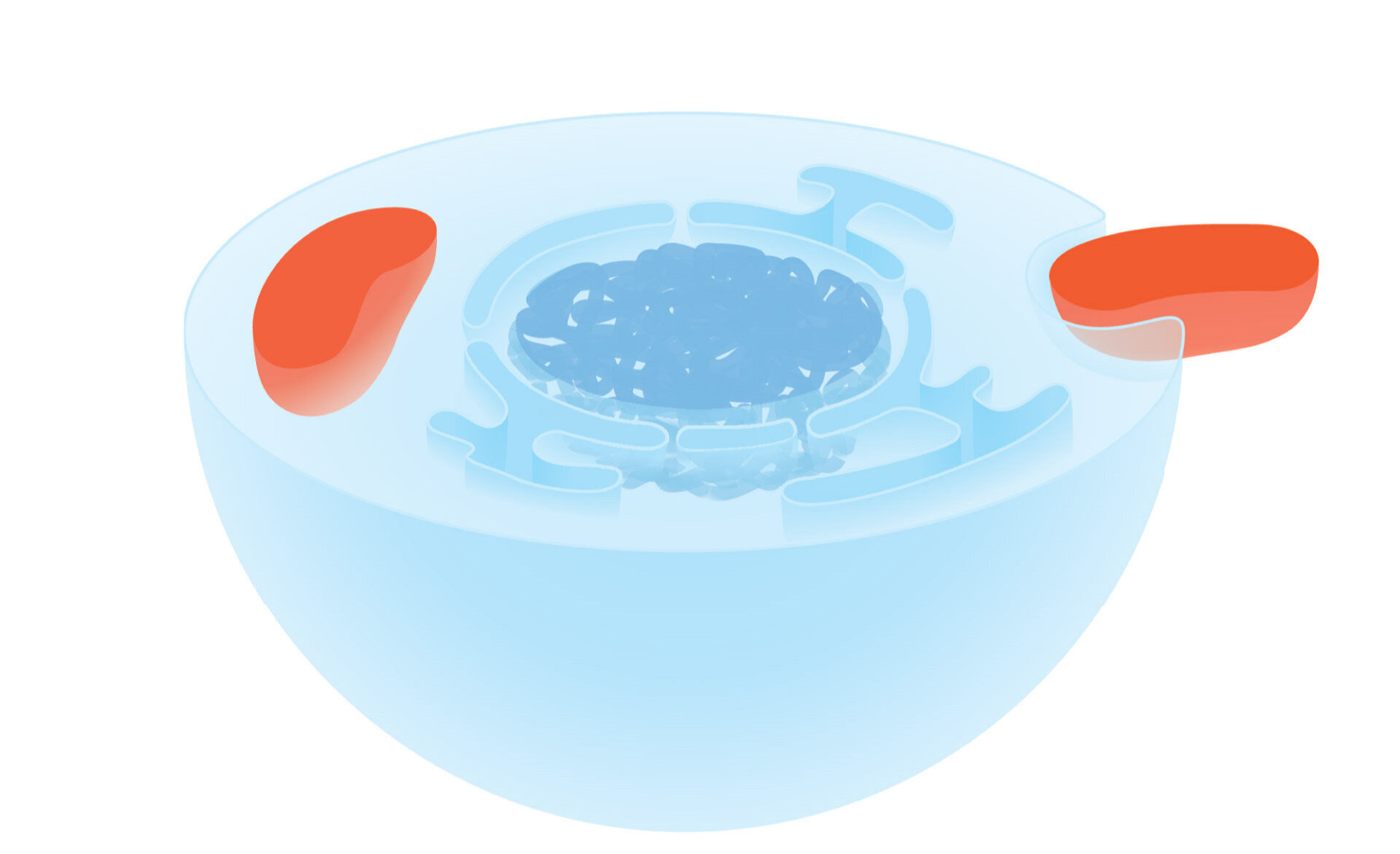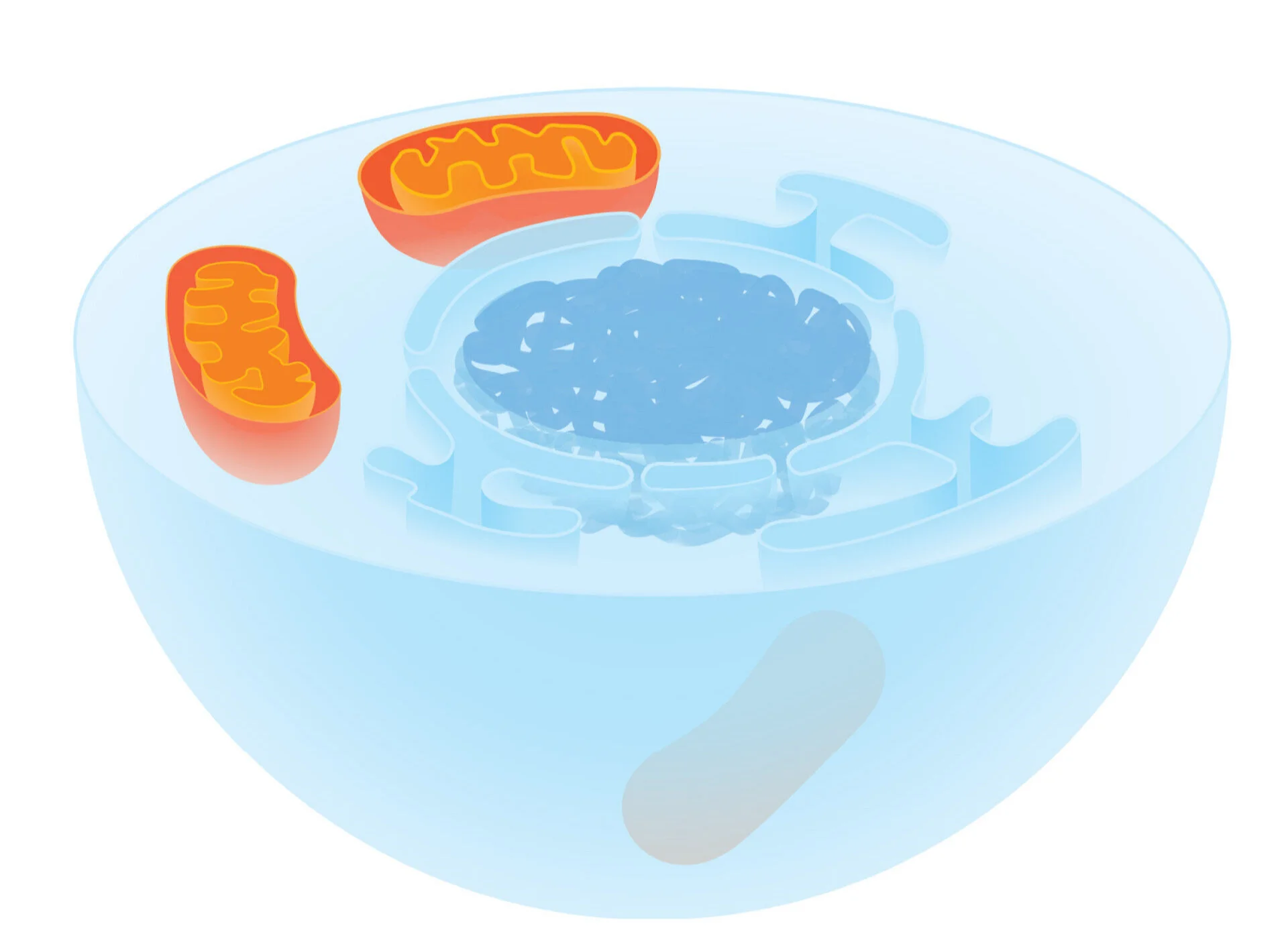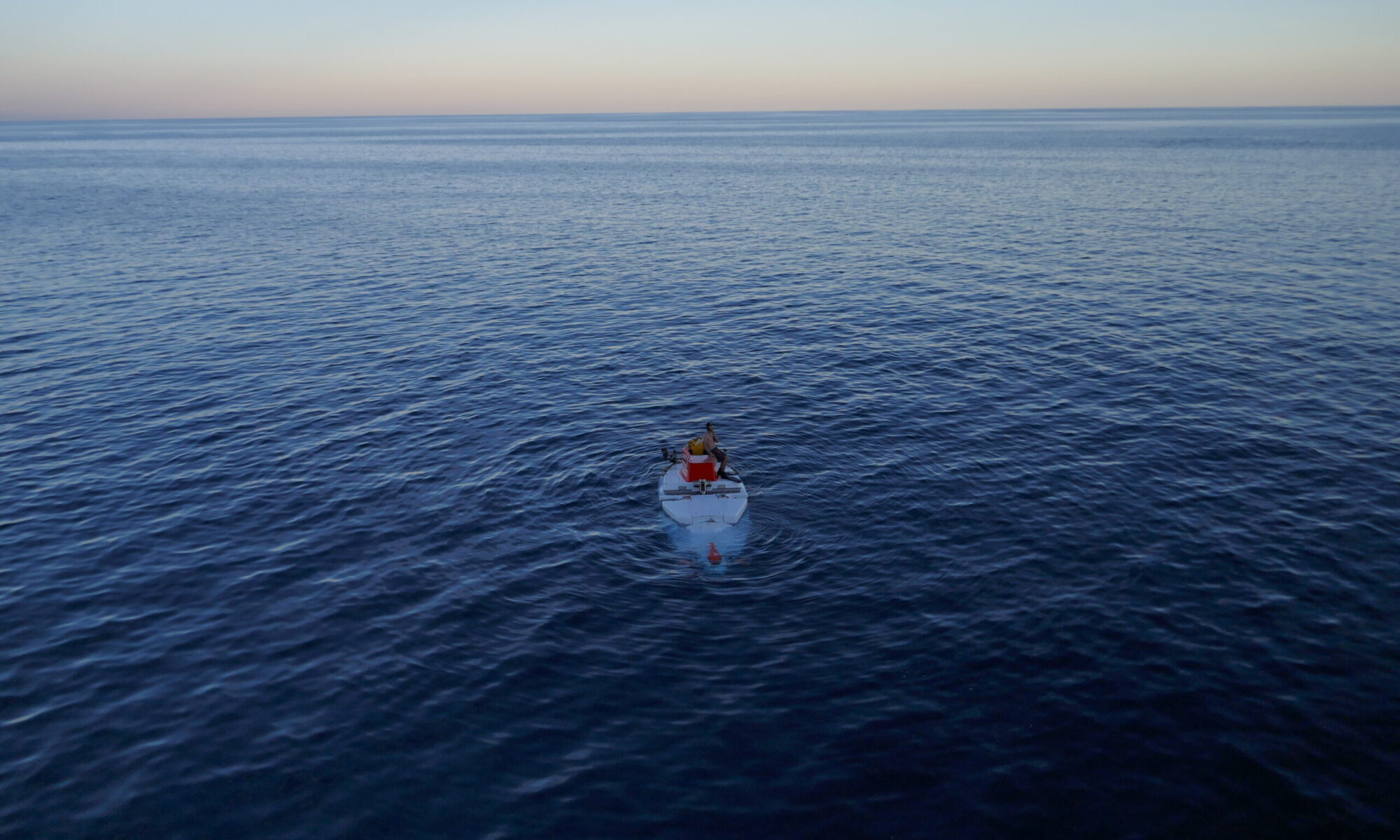The start of it all (from The Texas Scientist magazine)
Dinosaurs, daisies, starfish and humans are all made up of cells containing tiny biological hitchhikers. In all complex life, each cell has an energy-producing organelle that has its own DNA and looks and acts suspiciously like bacteria. In animals, they’re called mitochondria; in plants, they’re called chloroplasts.
How they got there is an open question and one researchers like Brett Baker, a faculty member in The University of Texas at Austin Department of Marine Science, explore. Baker thinks the answer may go something like this:
-
About 2 billion years ago, a microbe called an archaeon gobbled up a free-floating bacterium, and it worked well for both parties. The bacterium provided new energy sources to the archaeon, which in turn provided safety and nutrients.

Early Archaeon


-
Over time the two previously free-living microbes spawned a single, hybrid offspring — the first eukaryote.
-
All complex, multicellular life on the planet evolved from this new lifeform.

Baker and his colleagues have uncovered evidence that a recently discovered group of microbes, called the Asgard archaea, were the original hosts to give rise to all eukaryotes, including us humans. With support from the Moore-Simons Project, the scientists are now investigating which Asgards are most closely related to eukaryotes and further exploring their physiological interactions and cellular structure.
